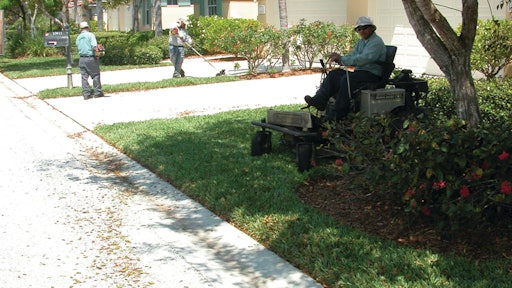
Hundreds of landscape companies have participated in the Working Smarter Training Challenge. Through this year-long training series, each has found ways to improve systems and processes—in the shop, in the field, and even in the office.
Carpenter & Costin in Rutland, VT, has put much of their focus on improving crew productivity. The company had typically run five- or six-man crews in both maintenance and construction. After a few Working Smarter sessions, it became obvious that this was wasteful.
Two's enough. “We now run two-man crews,” says Russ Marsan, president. “We very rarely allow more than two guys on a site. If it’s a large construction job, for instance, we might run 2 two-man crews; one crew does this while the other does that. When needed, one crew might steal a guy from the other crew for a half-hour or whatever. But a dedicated third guy is a waste.”
Four days are enough. A fifth working day also proved to be wasteful. “There are so many inefficiencies in day-to-day operations,” Marsan points out, referring to things like the morning routine and drive time to and from the shop. “We decided to start working four 10-hour days. That’s saving us at least $50,000 a year. Plus, our employees love it because they always get a weekend, even when we have a rain day during the week. We’ve also seen a reduction in truck and equipment maintenance costs.” Carpenter & Costin has roughly 17 employees.
First brought to the surface by the maintenance division’s operations manager, the concept of switching to a four-day workweek was only possible because everyone got involved—right down to the crew level. “When it’s a grassroots movement where everyone buys in, that’s when something really takes hold,” Marsan says.
Mobile time tracking. In Colorado Springs, CO, Tim Emick of Timberline Landscaping has made some changes with respect to payroll. The company has implemented electronic data collection for all of its timecards, which employees operate with a PDA. They simply log their time for each task and submit. The data syncs with the main computer back at the office, the manager approves it, and it goes right to payroll.
“What used to take an office person 30 hours a week to process payroll is now down to under 14 hours—plus it’s a lot more accurate because it has real-time data and GPS working with it,” Emick explains. “This will save us at least 2% of payroll.” The program Timberline uses is called mJobTime.






























